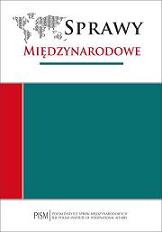Arabska wiosna – dwa lata później
Arab Spring Two Years Later
Author(s): Stanisław ParzymiesSubject(s): Politics / Political Sciences
Published by: PISM Polski Instytut Spraw Międzynarodowych
Summary/Abstract: After the Arab Spring has transformed the political scene in many Arab countries, developments in the region are now watched with concern by the outside world, particularly the European Union, the United States, and the Russian Federation. In several countries, democratic elections that followed the removal of autocratic regimes resulted in victories for moderate Islamic forces—but proponents of radical Islam, Salafism, inspired by Saudi Arabia, seek to influence the way these countries are governed and they call for Sharia to be imposed as the sole law. Islam’s two main branches, the Sunni and the Shiites, are seen to have intensified their rivalry, with the bloodiest example provided by the civil war in Syria. The takeover of power in Arab countries by Islamist groups has a negative impact on the security of Israel. Seeking to base its relations with Arab countries upon new principles is the regional power, Turkey. Meanwhile, a regional power status is being lost by Egypt, destabilised by continuing popular protests. One thing is certain: there will be no coming back to the pre-Arab Spring situation. Experts believe that a real chance for democratisation in Arab countries, as foreshadowed by the Arab Spring, could emerge with economic reforms, to be coupled with financial assistance for non-oil Arab countries.
Journal: Sprawy Międzynarodowe
- Issue Year: 2013
- Issue No: 1
- Page Range: 63-92
- Page Count: 30
- Language: Polish

